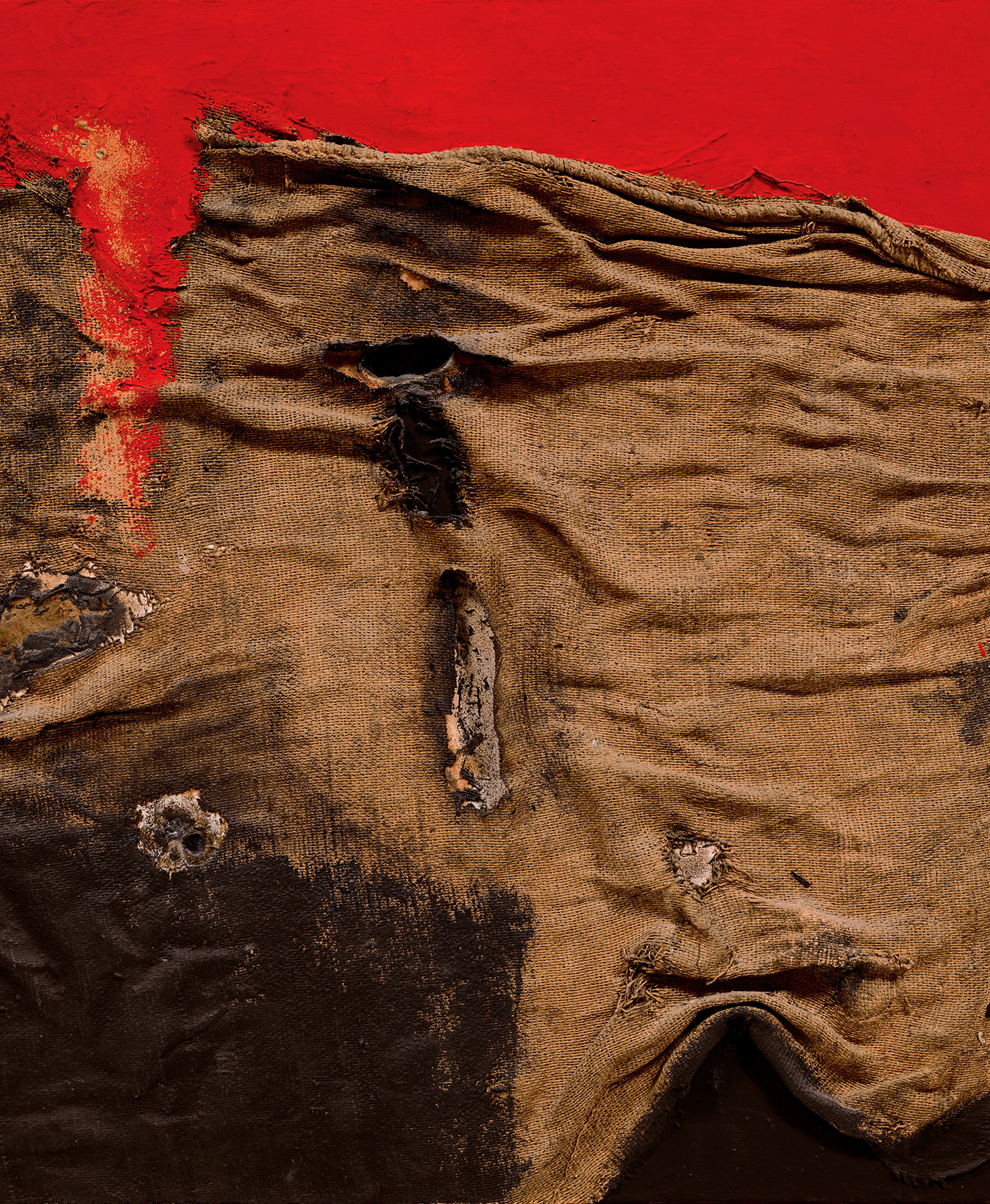



Property from an Exceptional Private Collection
14Ο◆
Alberto Burri
Sacco e Rosso
signed, titled and dated ‘Burri 56 Sacco e Rosso’ on the reverse
burlap, combustion and acrylic on canvas, in artist's frame
68.2 x 101.5 cm (26 7/8 x 39 7/8 in.)
Executed in 1956.